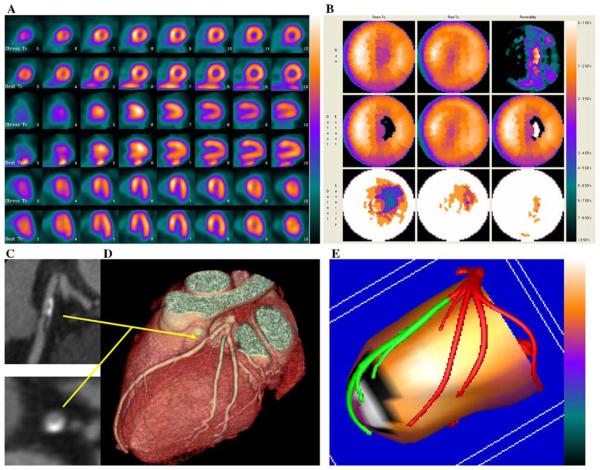Figure 3.
Example of fusion imaging in a patient with single vessel coronary artery disease. A, Short axis, vertical and horizontal long axis slices of the Stress/Rest SPECT study. This perfusion study was read as probably normal. B, Polar maps of the same SPECT study. C, Multi-planar reconstructions of the coronary arteries on CT angiography showing a plaque in the proximal left anterior descending coronary artery. This was read as equivocal for coronary artery disease. D, Three-dimensional rendering of the coronary arteries on CT angiography showing the paths of the coronary arteries and the plaque location in the left anterior descending coronary artery. E, Fused display; the black area on the fused display identifies a region of myocardial hypoperfusion during stress. The white area within the black region indicates an area of reversibility of the perfusion abnormality. The segments of the coronary arteries rendered in green are segments distal to stenoses seen on CT angiography. This fused scan was read as showing obstructive coronary artery disease in the left anterior descending coronary artery territory. Since the invasive angiogram results showed a 50% proximal left anterior descending coronary artery lesion, only the fused display was interpreted accurately.

